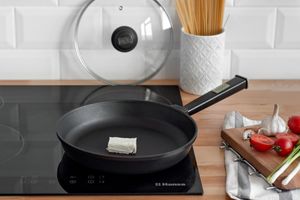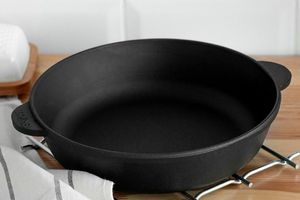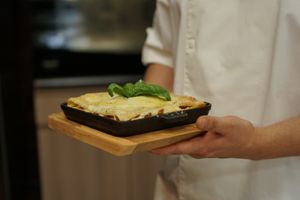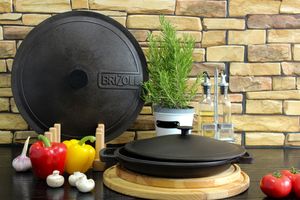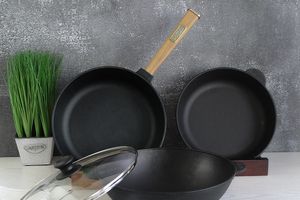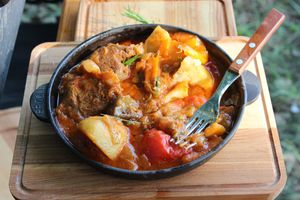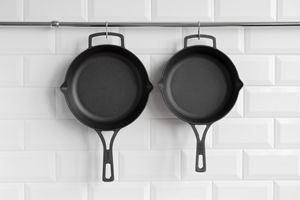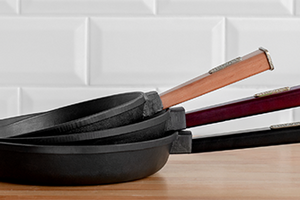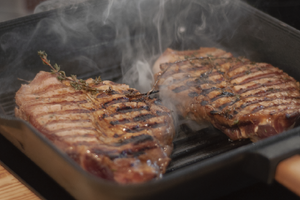RUST
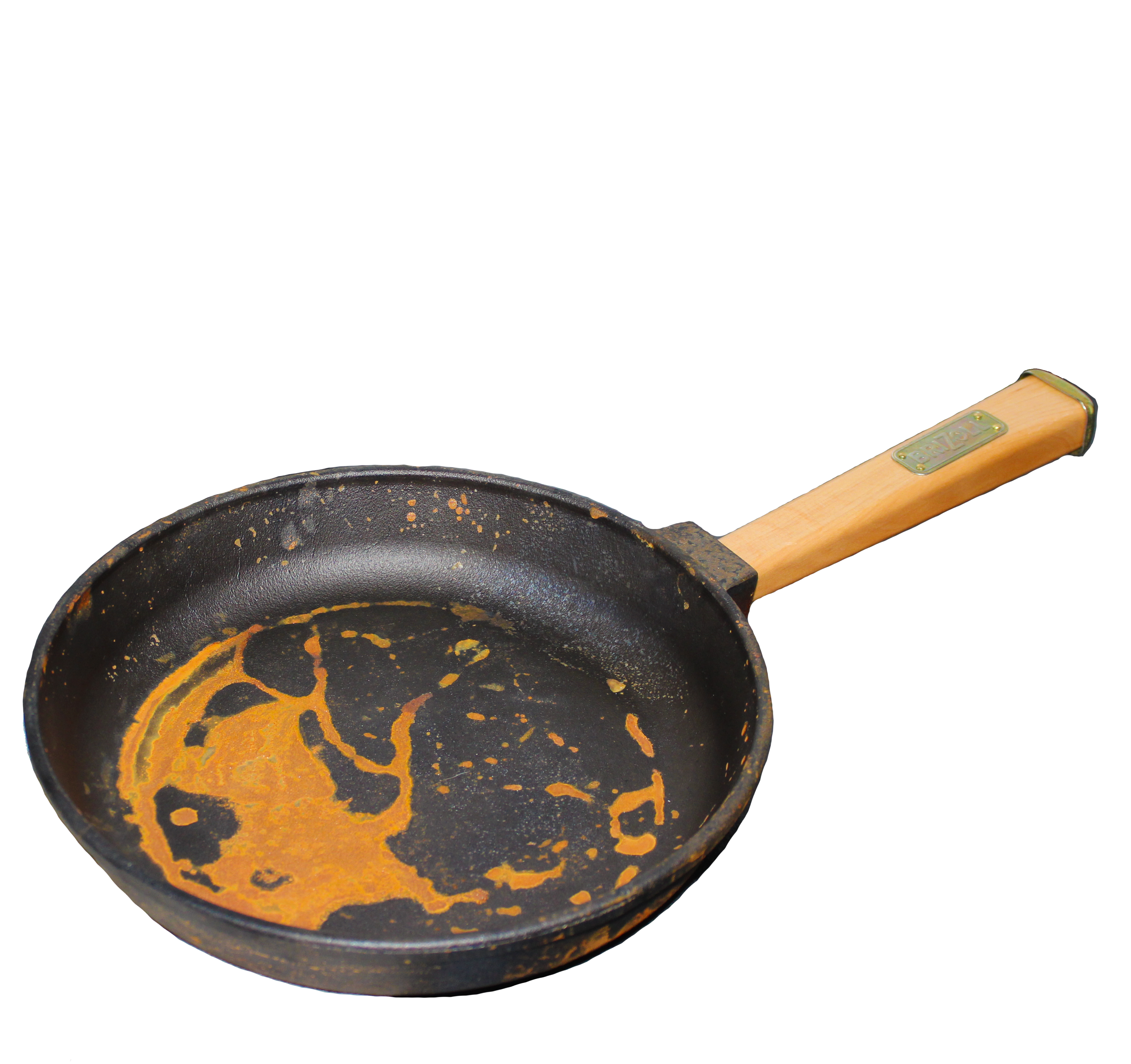 Cast iron cookware does not tolerate moisture.
Cast iron cookware does not tolerate moisture.
Not really, but prolonged contact with water or storage in high humidity conditions can lead to rust.
To prevent this from happening to your cast iron cookware:
- do not leave food in it for a long time after cooking;
- do not soak it in water for a long time;
- do not wash it in the dishwasher;
- do not store it in cabinets located near the washer where there is a high level of humidity or outdoors;
- always dry it after washing and grease with oil.
- - - - - - - - - - - - - - - - - -
HOW CAN I ELIMINATE
THE PROBLEM?
- - - - - - - - - - - - - - - - - -
# 1 CLEANING UP
Clean thoroughly your cast iron cookware with a special metal brush or scraper and rinse it under warm water with a small amount of detergent. In this case, it is important to remove absolutely all rust from the surface. Rinse off the detergent and thoroughly dry clean cookware and hands with a towel.
# 2 TREATMENT
Grease the cookware outside and inside with a thin layer of oil. Do not use too much oil - this will make the dishes sticky.
#3 BAKING
Place the oiled cast iron cookware in the oven upside-down on the wire shelf. Place a baking sheet under the wire shelf and line with foil. This must be done so that the remaining oil that can drain from the cookware through the wire shelf does not stain and burn on the surface of your oven. Bake the cookware for 1 hour at 230-260 °C (450-500 °F). Allow the cookware to cool down when finished.
BURNING
If the cast iron cookware is exposed to high temperatures for a long time, the amount of oil or fat in it may gradually decrease and the dishes may burn as a result of this cooking process.
- - - - - - - - - - - - - - - - - -
HOW CAN I ELIMINATE
THE PROBLEM?
- - - - - - - - - - - - - - - - - -
If food particles are burnt and stick strongly to the surface, it is better to pour water into a bowl and boil it for 3-5 minutes. Cool it and scrub with a brush or dish scraper. In most cases, this will be enough to clean your cast iron cookware completely. If that doesn't work, clean it as if it were rust - it will definitely help!
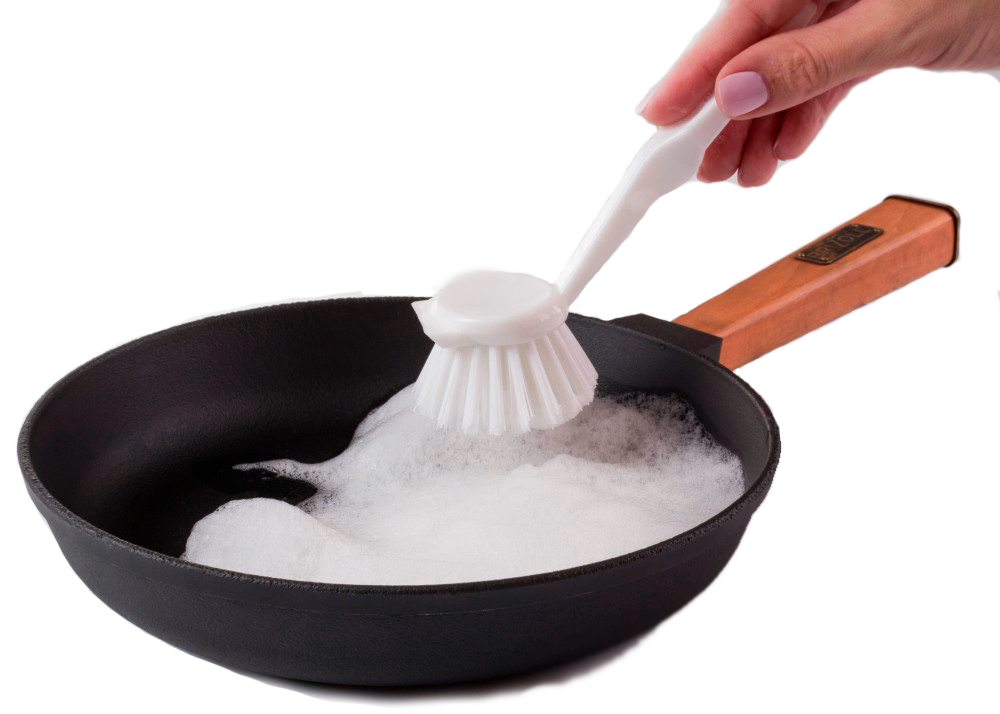 CARBON DEPOSIT
CARBON DEPOSIT
Sometimes carbon deposits can partially come off the cast iron cookware. This is especially noticeable when you wash it or dry it with a towel. Accordingly, black water flows from it or black marks remain on the towel. This carbon deposit is absolutely safe for health, because it is formed naturally when vegetable fats are baked on the surface of the dishes during the cooking process. It is washed off due to prolonged contact with water, excessive use of detergents or the preparation of liquid and acidic dishes.
- - - - - - - - - - - - - - - - - -
HOW CAN I ELIMINATE
THE PROBLEM?
- - - - - - - - - - - - - - - - - -
You don't need to do anything special, everything will go away as you continue to use the cookware and take proper care of it.
STICKY SURFACE
If the surface of your cast iron cookware suddenly becomes too sticky, this indicates that too much grease / oil has accumulated on it.
- - - - - - - - - - - - - - - - - -
HOW CAN I ELIMINATE
THE PROBLEM?
- - - - - - - - - - - - - - - - - -
After each treatment with oil make sure that there is no excess of oil on the surface of the cookware. If it does appear, place the cast iron cookware in the oven upside-down on the wire shelf and bake for 1 hour at 230-260 °C (450-500 °F). Place a baking sheet under the wire shelf and line with foil. This must be done so that the remaining oil that can drain from the cookware through the wire shelf does not stain and burn on the surface of your oven. Allow the cookware to cool down when finished.
PEELING
It happens that the protective coating on cast iron cookware can partially peel off. It looks as if gray spots appear on the surface of the cookware. The reasons can be different, for example, cooking without fat or oil, too high temperatures, improper cleaning, processing, etc.
- - - - - - - - - - - - - - - - - -
HOW CAN I ELIMINATE
THE PROBLEM?
- - - - - - - - - - - - - - - - - -
To remove any remaining shells, thoroughly rinse and dry the cookware, grease with a thin layer of oil and place the cast iron cookware in the oven upside-down on the wire shelf and bake for 1 hour at 230-260 °C (450-500 °F). Place a baking sheet under the wire shelf and line with foil. This must be done so that the remaining oil that can drain from the cookware through the wire shelf does not stain and burn on the surface of your oven NOT smeared or burnt on the surface of your oven. Allow the dishes to cool down when finished.
SMELL
When cooking fish, seafood, garlic or vanilla dishes in cast iron cookware, be prepared for the smell of your dishes if not cleaned right away.
- - - - - - - - - - - - - - - - - -
HOW CAN I ELIMINATE
THE PROBLEM?
- - - - - - - - - - - - - - - - - -
If smell remains on the cookware, it can be eliminated in several ways.
1. Bake the cookware at 200 °C (400 °F) in the oven for 15 minutes.
2. Pour salt into the cookware and leave for 10-12 hours, then properly wash, dry and grease with oil.
















